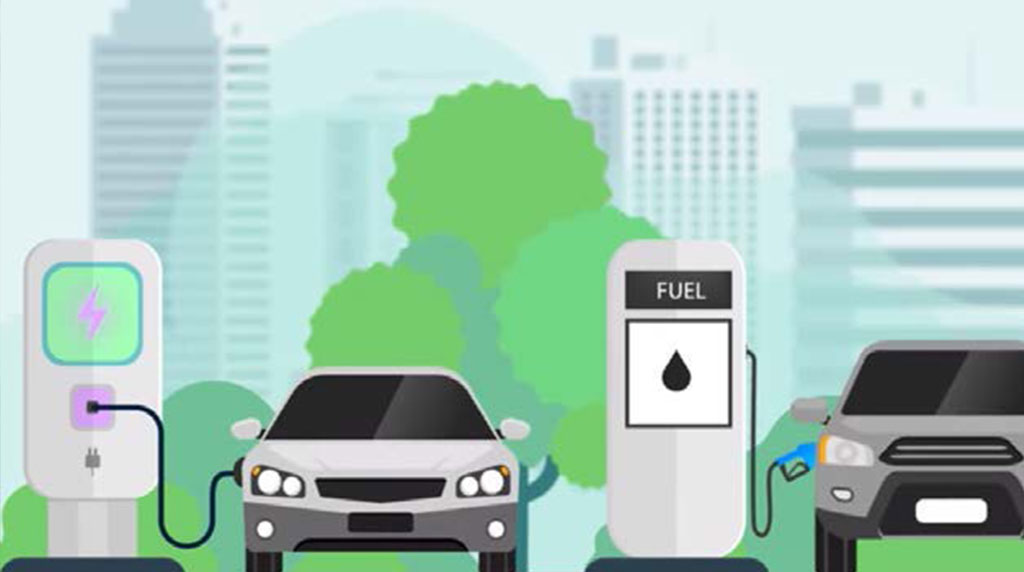MERE days after the 2024-25 budget was handed down, the New Vehicle Efficiency Standard Bill was passed into law ushering in major changes that will alter the price and type of vehicles sold in Australia with wide ranging effects across the automotive space.
After representations from interested parties in the lead up to its arrival on the floor of parliament, adjustments to the NVES were last month announced by Energy Minister Chris Bowen that were extensively reported in GoAutoNews Premium.
Mr Bowen had agreed to recategorising a limited number of 4WDs from passenger cars to light commercial vehicles.
He said: “This acknowledges that some off-road wagons use similar ladder-frame chassis, and need comparable towing capacity above three tonnes, to dual cab utes. This includes models such as the Toyota Landcruiser and Nissan Patrol.
He agrees to smooth the emissions trajectory for light commercial vehicles. This reflects adjustments announced by the US EPA to its vehicle Standard and smooths the transition for utes, vans and 4x4s.
Adjusting the weight-based relative emissions limits (known as the break point) recognised that heavier vehicles emit more.
Staging implementation to enable preparation and testing of essential data reporting capabilities was to ensure we get the implementation right in partnership with industry. The scheme will commence on 1 January 2025 but manufacturers will not begin earning credits or penalties until 1 July 2025.
The arrival of the NVES has received generally positive reactions from interested parties with the Australian Automotive Dealer Association (AADA) which represents franchised new car dealers saying it has “noted” the passage of the New Vehicle Efficiency Standard.
“New car dealers have supported the introduction of a standard for a long time and, while we consider this to be an ambitious standard which will be very challenging to achieve, dealers are ready to play their part in significantly lowering vehicle emissions,” AADA CEO Mr James Voortman said.
“This policy ushers in a major transition in Australia’s automotive retail sector and new car dealers as a customer facing industry will be central to supporting consumers as they transition to low and zero emissions vehicles.
“We are confident that Australia’s nearly 3,200 new car dealerships and their 61,000 employees have a bright future,” he said.
“While this legislation is a significant reform, there is a lot more complementary work needed to ensure lower emissions vehicles are affordable and that Australians buying these vehicles have access to charging infrastructure.
“One key element being the $60 million dealership charging fund to assist dealers in installing charging infrastructure to support the transition to selling and servicing electric vehicles,” said Mr Voortman.
The dealer body said the policy also underscores the need to investigate issues around automotive franchising reform as compliance with the NVES and the arrival of many new manufacturers will put Australian dealers at “greater risk”.
“Now that the legislation has passed, we will focus on working with the Government to ensure implementation is as smooth as possible. In particular, we will push for the compliance of this scheme to move from the point of import to the point of sale over time,” said Mr Voortman…
The Motor Trades Association of Australia (MTAA) chief executive Matt Hobbs said “The passage of the NVES Bill signifies an important moment for the Australian automotive industry.
“This legislation, a result of collaborative efforts between the Albanese Government and the automotive sector, marks a significant step forward in our collective journey towards decarbonisation.
“As the representative of the automotive retail trades sector from dealers, repairers and recyclers to every business in between, we acknowledge the Government for its good faith negotiations with our industry and listening to our calls for a workable compromise, especially in the early years of the scheme.
“It’s undeniable that the targets outlined in the Bill will present substantial challenges for certain car companies, emphasising the importance of ongoing monitoring and review. It’s also particularly crucial to consider the evolving landscape in the United States and Europe.
“In parallel, while we appreciate the transition support already provided to our sector in the most recent Federal Budget, we recognise that there is still more work to be done. We remain committed to working alongside the Government to secure the necessary support automotive retailers need to adapt in a rapidly changing environment sparked by the advent of electric vehicles.”
The Federal Chamber of Automotive Industries (FCAI) welcomed the certainty provided by the passage of the NVES) Bill through Federal Parliament.
This legislation provides the framework for the transition to a low and zero-emission future for Australia’s automotive industry, ensuring clarity for both the industry and consumers.
Chief executive of the FCAI Tony Weber said the focus must now be on ensuring that all Australians continue to have access to the vehicles that meet their lifestyle and needs, at prices they can afford.
“We recognise the challenges for industry in meeting the ambitious targets and ensuring Australia motorists have access to the vehicles they love and want to drive,” Mr Weber said.
“We are pleased to see the investment of more than $150 million towards NVES implementation in this week’s Budget. It is vitally important that on 1 January 2025 when this policy is enacted, the administration of this scheme operates effectively.
“We intend to work closely with the Government and our members on the design and implementation of this scheme. Working together will be essential in addressing any challenges and to ensure that the transition benefits all Australian businesses and families and we remain on a pathway of emissions reduction,” he said.
For its part, the Australian Automobile Association (AAA) said in a statement that it was “pleased” to see Australia introduce a fuel efficiency standard for its new vehicle fleet, but disappointed by the lack of clarity on the consumer impacts of the Government’s preferred approach, and the lack of a bipartisan approach to this significant reform.”
The organisation says it has for many years championed the introduction of a standard capable of ensuring Australian motorists can access a first world fleet and the cleanest and safest cars under production.
The AAA says it has long accepted that such a standard will make the cost of some cars higher than it otherwise would have been – just as it will make others cheaper.
“The degree to which the Government’s New Vehicle Efficiency Standard reduces transport emissions, improves consumer choice, or increases car prices will depend upon how the Government has balanced the standard’s ambition and achievability.
“The AAA very much hopes the Government’s forecast improvements in fleet choice and transport affordability are realised, and encourages the release of detail to motorists on how the scheme negotiated with car makers and dealers will change price and availability for specific vehicle segments and models.
“The Government is right to incentivise the uptake of new technologies and more fuel-efficient vehicles (through a credit system), but this ambition must be supported by a suite of policies and programs to drive behaviour change that among other things include: upgrading Australia’s EV recharging network, addressing the increasing inequity of current motoring tax arrangements, implementation of a “Real-World Testing Program” to help ensure emissions reduction and fuel efficiency targets of the laboratory-based standards (including NVES) deliver real world benefits to motorists and the environment.
The AAA reiterated its call for a bipartisan approach to the various policies shaping the technological transition of Australia’s vehicle fleet. Its final NVES comment relates a transport affordability index that shows Australian households are today paying $454.41 per week on transport costs – a figure currently rising at 10 per cent per annum.
The Electric Vehicle Council (EVC) “congratulated” the government and parliament on the NVES standards becoming law with EVC chief executive Behyad Jafari saying the landmark decision represented a significant leap forward for Australia in its commitment to a cleaner, more sustainable future.
“This is a historic day. After multiple attempts by different governments, Australia today finally joins the rest of the world,” he said.
“For many years now, we’ve campaigned for Australia to join the US and Europe by introducing vehicle efficiency standards so car makers are incentivised to offer their best and most affordable electric options to Australians.
“The passing of these new standards is a testament to the Albanese Government’s commitment to progressive and ambitious policies that will help Australia become a leader in the global transition to electric vehicles. This move sends a clear signal to the global automotive industry: Australia now demands the same options in electric cars, vans, and utes that you offer to the US and Europe.
“Australian drivers will benefit from access to a greater choice of vehicles, lower fuel bills, and real cuts to transport emissions. Most Australian drivers are now interested in considering electric options and more choice will naturally drive greater take-up of EVs. Ultimately, these standards will mean all Australian consumers are paying lower fuel bills, breathing cleaner air, and enjoying a greater choice of the latest and greatest in new cars.
“Thanks to these standards, Australia will no longer be considered the global dumping ground for the world’s most inefficient vehicles. Importantly, these standards are robust and transparent, giving us a solid foundation from which to build in future years.
By Peter Barnwell

















 Read More: Related articles
Read More: Related articles

